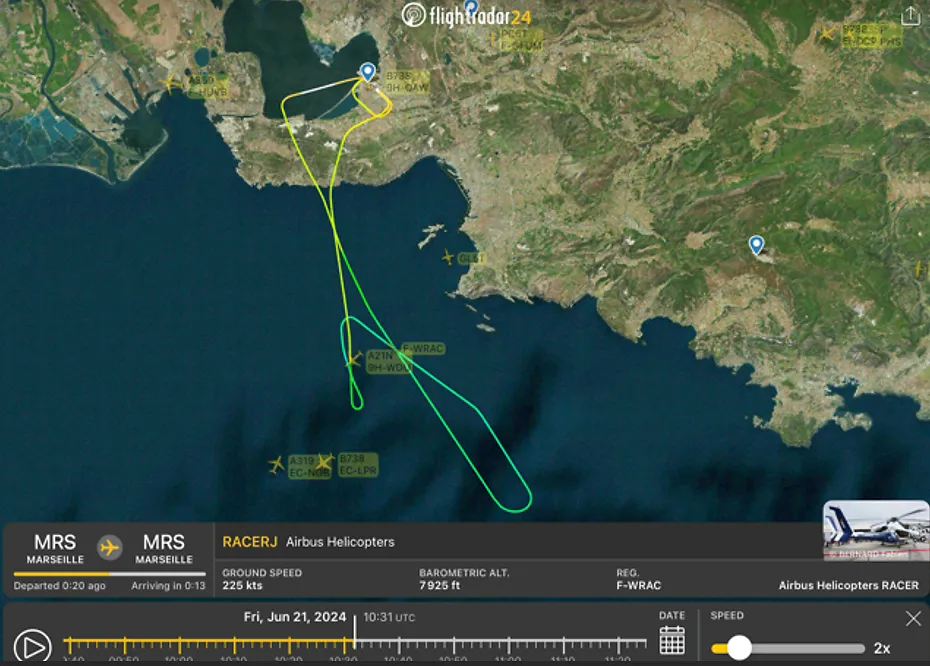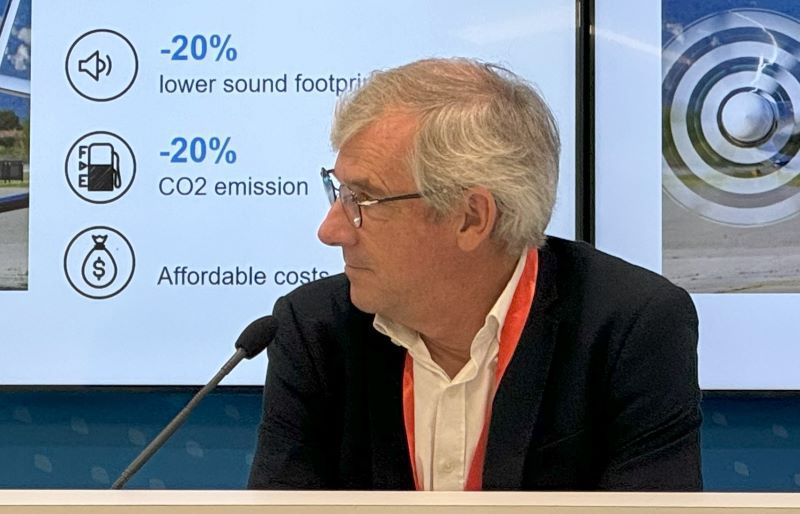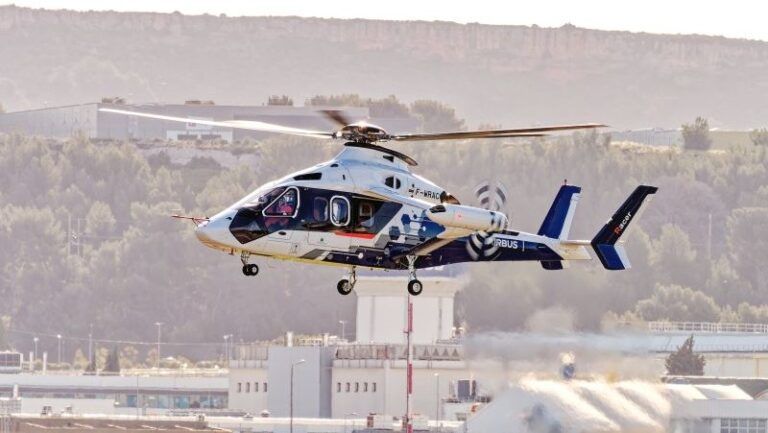Airbus’ Racer compound helicopter has surpassed its targeted top speed just seven flights and nine hours into its two year flight testing campaign.
The target fast cruise speed of 253mph (407km/h) was passed on June 21, less than two months after Racer’s first flight, when Airbus Helicopter’s chief test pilot Hervé Jammayrac, pushed the aircraft to a speed of 260mph (420 km/h) during a test flight.
The flight test team has also already opened up 80% of Racer’s flight envelope, flown without autopilot in cruise and performed steep banking maneuvers at speeds above 230mph (370km/h).
Speaking at the Farnborough Air Show during July, Tomasz Krysinski, research and technology director, Airbus said, “I’ve been in the business for 40 years. Covering this much of the envelope in just a few flights has never happened before.”
Jammayrac said, “Racer is already a proven design. Simulation and rig testing meant we were more than ready before the first flight. We have been very impressed by the maturity of the design. The quality of the aircraft was like it could be delivered next week. We are proud of what we have achieved so far.”

Racer builds on the design of the Airbus Helicopters X3 technology demonstrator, which in 2013 broke the world speed record for a helicopter by reaching 472km/h (293mph). X3 aimed to validate the compound architecture, while Racer is integrating the X3’s innovations into an operational aircraft.
The compound design of Racer features two box wings with lateral rotors as well as the main rotor on top, and an asymmetric tail boom. The helicopter is powered by two Safran Aneto-1X engines.
Jammayrac said, “We took the lessons learned from the X3, with which there were some issues, and engineering did a great job correcting them. The differences between the two aircraft are obvious, and Racer is very close to final product.
“It is a helicopter by design and uses the same controls. There is just an additional control for acceleration and deceleration which brings in the power of the lateral rotors for additional performance on the horizontal axis.”
Flight testing of Racer resumes this month and will focus on single-engine operations and finalize the flight envelope. A hybrid-electrical eco-mode system, which allows one of the two engines to be paused while in cruise flight to help reduce fuel consumption and CO2 emissions will also be tested.
As well as cruise speeds of above 400km/h, Racer is targeting a fuel consumption reduction of around 20% compared to current generation helicopters from aerodynamic optimization and its eco-mode.
“The main rotor has very low drag and the box wing design has a lot of advantages, it allows the design to be very sleek,” said Krysinski. “We always dreamed to fly quicker with Racer. The target is 50% faster than a conventional helicopter, with a lower sound footprint and less CO2 emissions through reduced fuel burn. Value for money is also a key driver.”
The aerodynamic drag created by Racer is 45% less than a conventional helicopter, with the reductions created by the shape of the aircraft’s body and the integration of the main rotor with its lower drag.
“Rotors don’t like being inclined to make forward flight in conventional helicopters. Here in forward flight, the main rotor is flat and acts like a wing,” said Krysinski. “The higher efficiency of the aircraft is a disruption.”

Racer was put through three ground runs before the first flight, covering starting, tuning the engine and the rotors. For the test in June the initial intention was to restrict the speed to 80 knots (92mph).
As well as Jammayrac, the flight test also included flight test engineers Dominique Fournier and Christophe Skorlic.





